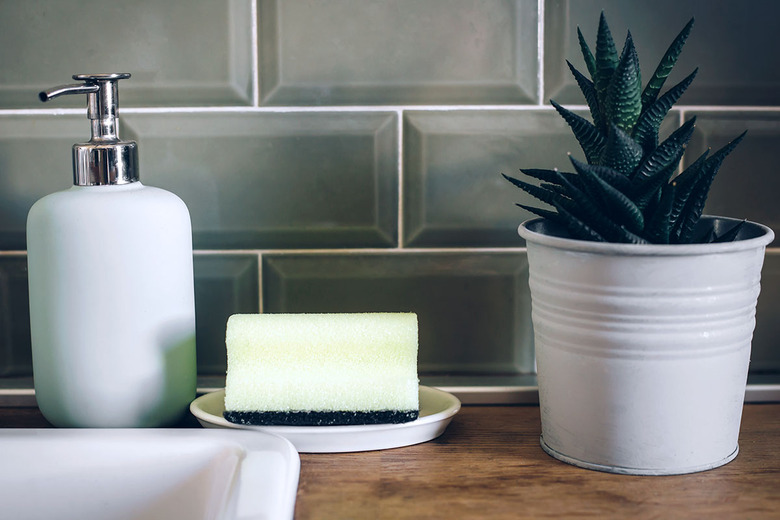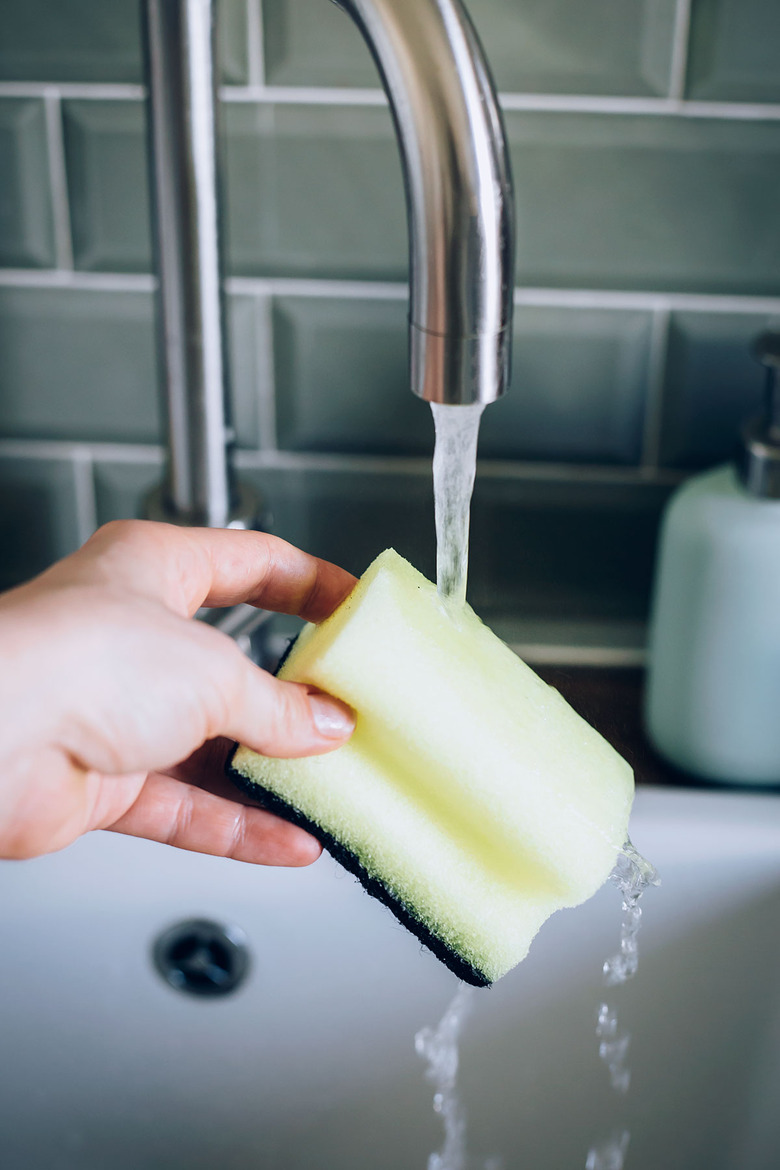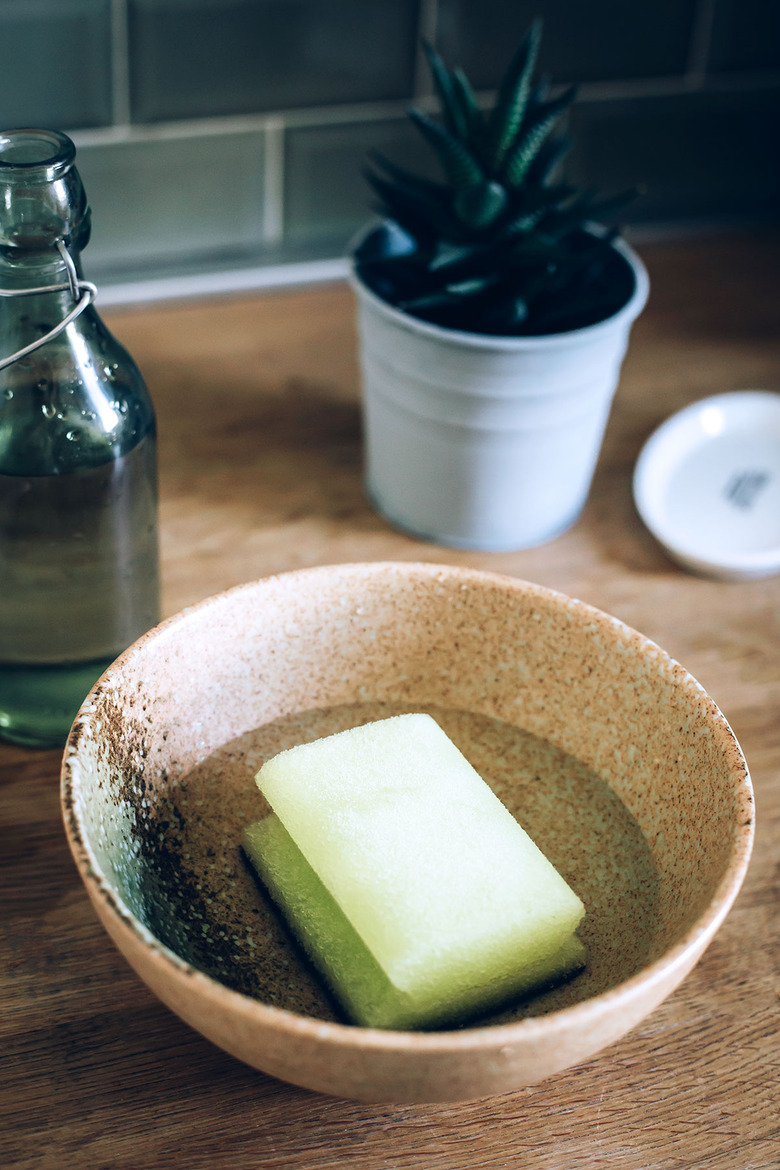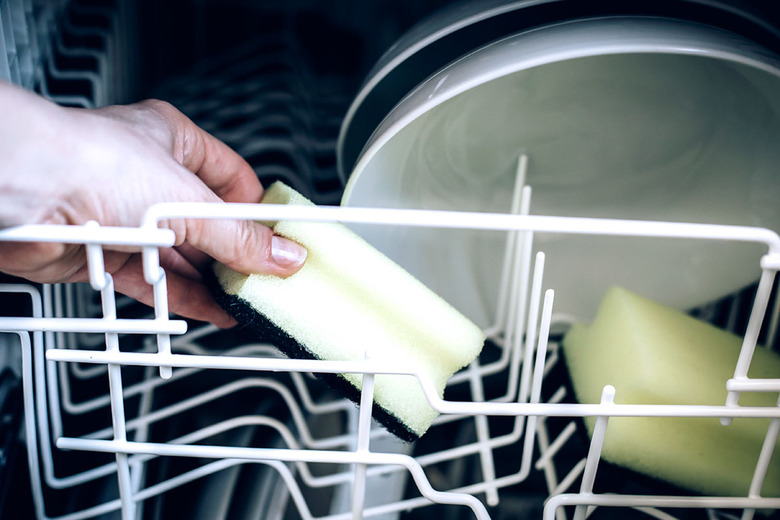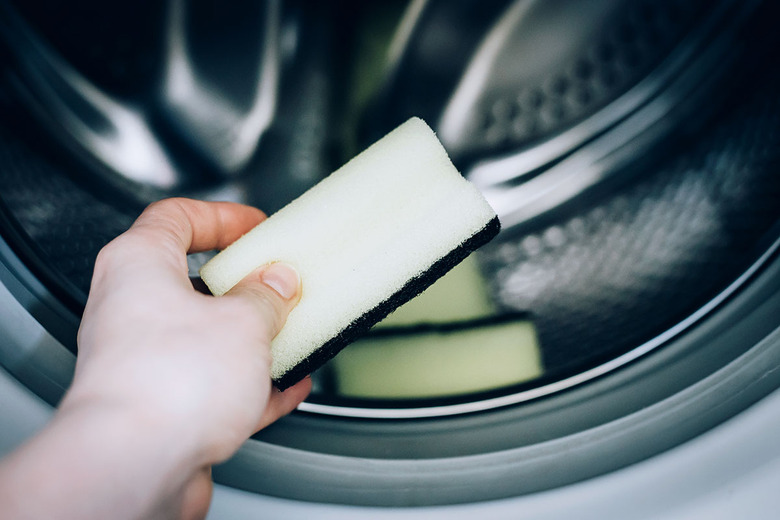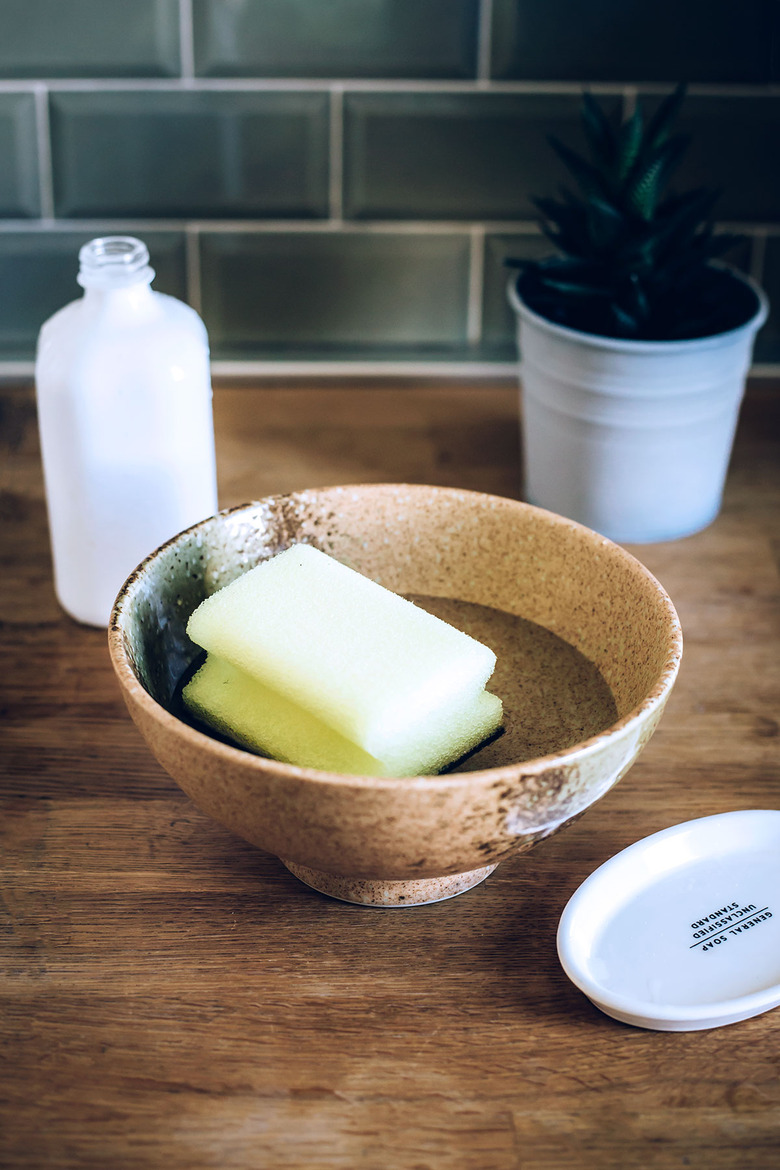How To Clean Your Sponges (Because Bacteria Is Real)
Sponges are supposed to keep kitchens and bathrooms clean, but unfortunately they could also be spreading harmful germs. Sponges pick up bacteria from food, hands, or surfaces they're cleaning. And because they often don't dry out between uses, that wet, warm environment is a perfect place for bacteria to multiply.
Sponges aren't meant to last forever; it's a good idea to replace them every couple of weeks. And it's definitely time to toss when they start to smell. What are those funky, musty odors? Yeah, that's bacteria.
To extend the life of a sponge, you can clean them one of two ways: by using a sanitizing solution or a cleaning appliance (think dishwasher). Because a clean sponge means you'll have a cleaner kitchen.
Option 1: Give your sponge a soak.
Option 1: Give your sponge a soak.
Bleach
Bleach is a heavy-duty disinfectant that's very effective at killing bacteria on sponges. Just remember it needs to be diluted with water before using. To make a disinfecting solution, combine 1 to 3 tablespoons of bleach with 1 quart of water.
If you're cleaning a few sponges or adding other items to the cleaning bath, you can fill a bucket with 1/4- to 3/4-cup bleach with 1 gallon of water.
Soak the sponge for at least five minutes and then rinse. Let the sponge air dry completely.
Vinegar
If you don't want to use bleach, try soaking in undiluted distilled white vinegar. The acetic acid in vinegar effectively eliminates 99.6 percent of bacteria on sponges. Soak sponges for at least five minutes, up to overnight. Squeeze out the vinegar, rinse the sponge, and let it air dry.
Option 2: Let your appliances do the work.
Option 2: Let your appliances do the work.
Dishwasher
About to start the dishwasher? Toss in your sponges! Place them in the top rack and run the dishwasher on the heated dry setting. The heat and dishwasher detergent will do the work of cleaning and killing 99.9998 percent of bacteria, according to the United States Department of Agriculture (USDA).
Microwave
Cleaning sponges in the microwave is a common recommendation. It kills 99.99999 percent of bacteria, according to the USDA. Unfortunately, new research indicates that the strongest and stinkiest bacteria will survive.
If you want to give it a try, let a cellulose sponge soak up 1/2-cup water and heat it on high for one minute.
WARNING: Don't microwave any sponges or scrub brushes with wooden or metal parts, as they could spark and cause a fire.
Washing Machine
You can also clean sponges in the washing machine. Add a sponge to a load of laundry and run on the hottest setting. (Even better if you're adding bleach.)
If you keep your sponges clean, you can use them longer. However, even clean sponges will wear out eventually. To keep your house and family healthy, let sponges dry completely between uses and replace them regularly.
